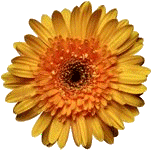The Garden: Growing Things
Vegetables and companion plants Herbs
 The great thing about gardening is that it stays done! Not for ever, of course, but much longer than dishes stay washed or floors stay vacuumed. Spend an hour or two weeding the garden and you can admire your work for weeks. Spend the same time planting seedlings and the effect will not only last but get better and better over the ensuing months.
The great thing about gardening is that it stays done! Not for ever, of course, but much longer than dishes stay washed or floors stay vacuumed. Spend an hour or two weeding the garden and you can admire your work for weeks. Spend the same time planting seedlings and the effect will not only last but get better and better over the ensuing months.
Since gardening should always be enjoyable, avoid the things that make it hard or uninspiring. If a particular plant doesn't thrive in your garden, grow something else. Some plants like certain soils and certain amounts of sunlight, and you can spend a heap of time trying to adjust conditions for them. Far better to walk along your street and take notice of the healthiest-looking plants in other people's gardens. You can even ask neighbours for advice, cuttings and seeds. Such requests, usually prefaced by an admiring remark, are a compliment in themselves, and, far from being seen as impertinent, can make some-one's day, and the advice you get will be exactly right for your locality.
Home-grown vegetables are a good idea, but it's easy to get the impression that you need to plough up your whole back garden to grow any, and this can certainly put you off. You can make a huge difference to the taste of your food with a very few plants, and they don't have to be in a dedicated area, nor do they need to be standing in serried ranks. Most vegetables will grow happily between and amongst flowers. They do need sunlight, so you can't actually put them under trees or shrubs, but apart from that consideration, mixing plants of all kinds throughout a garden has lots of advantages.
When the same kind of plant is grown over a large area—say a field of cabbages—pests notice and come running, whereas a single plant will often escape their attention. Also, many plants benefit from the presence of others. Nasturtiums and marigolds, for instance, seem to improve the health of any plant they're close to. Basil, which is often used to flavour tomatoes, also assists the growing tomato plant. Growing garlic or chives near roses seems to slow down aphid infestation. There are also plants which stop others from thriving—onions are bad for beans—but these are relatively few. A brief list of commmonly grown vegetables and some of the plants that seem to enhance their growth and health is here.
What Should I Grow?
Tomatoes are by far the most often home-grown "vegetable", and
the reason is simple: bought tomatoes don't taste as good. Commercial tomatoes must be able to withstand repeated and sometimes rough handling. Unfortunately, breeding for this quality has overshadowed taste and texture. Early picking to maximise shelf life also diminishes the flavour of the fruit, so growing your own can be extremely rewarding.
The recent drought has pointed up the fact that some varieties of tomato are far more resistant to tough conditions than others. The tiny cherry tomatoes that self-sow everywhere are the strongest of all. Therefore, plant several varieties and save seed from those most inclined to thrive.
Silver beet doesn't keep well, and the bunches are often bigger than you'd like, so grow silver beet yourself and pick just as many leaves as you need. Shop-bought potatoes and onions, on the other hand, are seldom disappointing, so giving time and attention to a crop of either may be a rather profligate use of time, space and effort.
Salad vegetables are well worth having near the kitchen door. Particularly appealing are the new varieties of lettuce from which you pick as much as you want, leaving the plant in the ground to grow more for next time. Seedling plants for these can often be bought as a mixture; perhaps five varieties together. Tossed together with calendula petals or borage flowers these look most attractive. You can buy this mixture in your supermarket, but the price is usually very high indeed.
Cucumbers take up some space, must have plenty of sunshine and be a bit exposed to the wind, but are very nice to have. Start by burying copious quantities of animal manure well below the surface, then form a small hill for each plant or each group of seeds. Black plastic mulch is great for warming the bed early in the growing season, but it does mean that you later need to take care to get water right to the roots of the plants.
Carrots and radishes are a good thing to sow together. The radishes mature quickly, and pulling them cuts down on the amount of thinning that has to be done to the carrots.
Celery is tricky, and not encouraging if you're a beginner.
Herbs come in all shapes from bushes to ground covers, and visitors almost always like some snippings to take home.
Questions or comments? I’d love to hear from you. My email address is here.
Return to top
2001